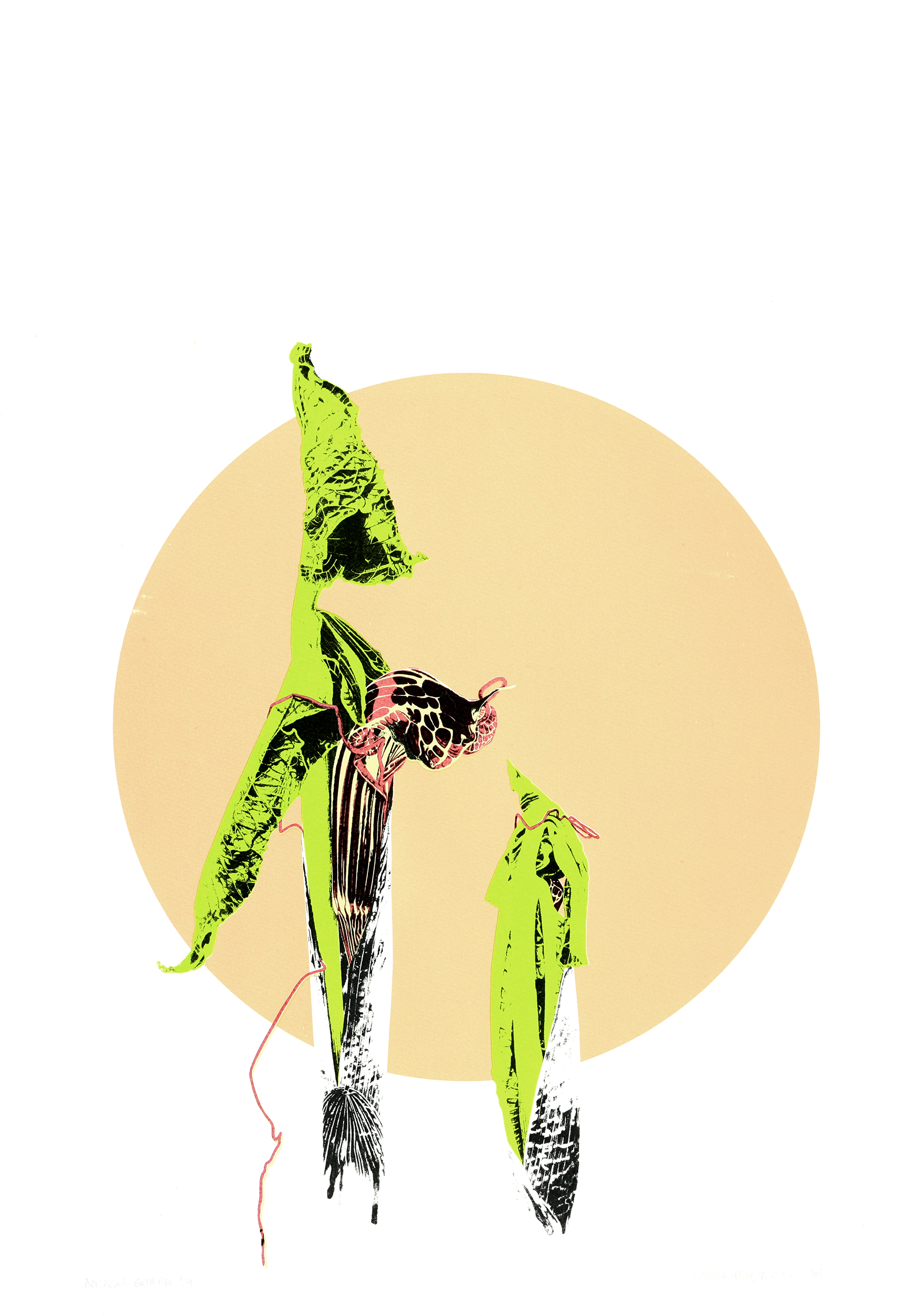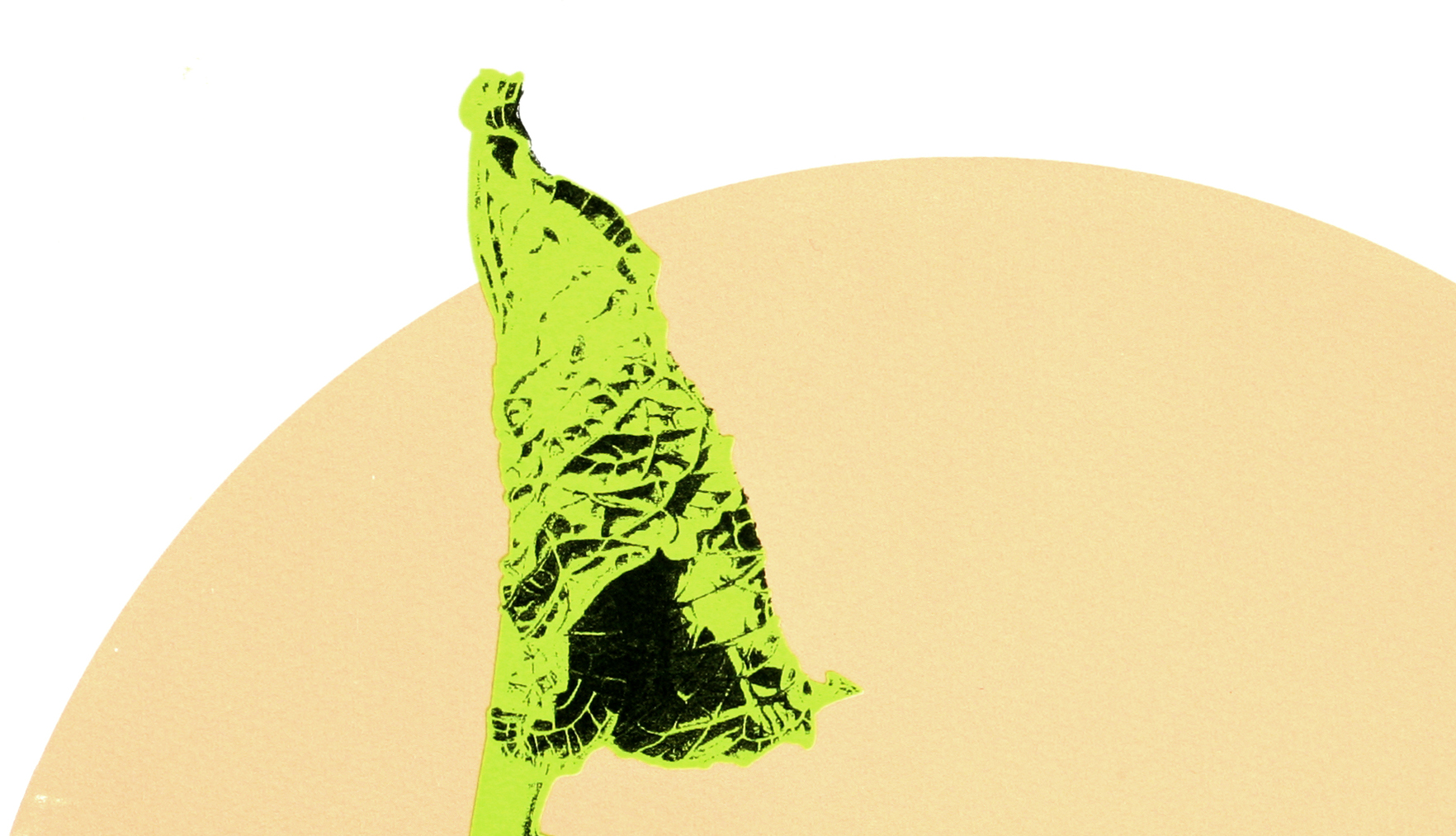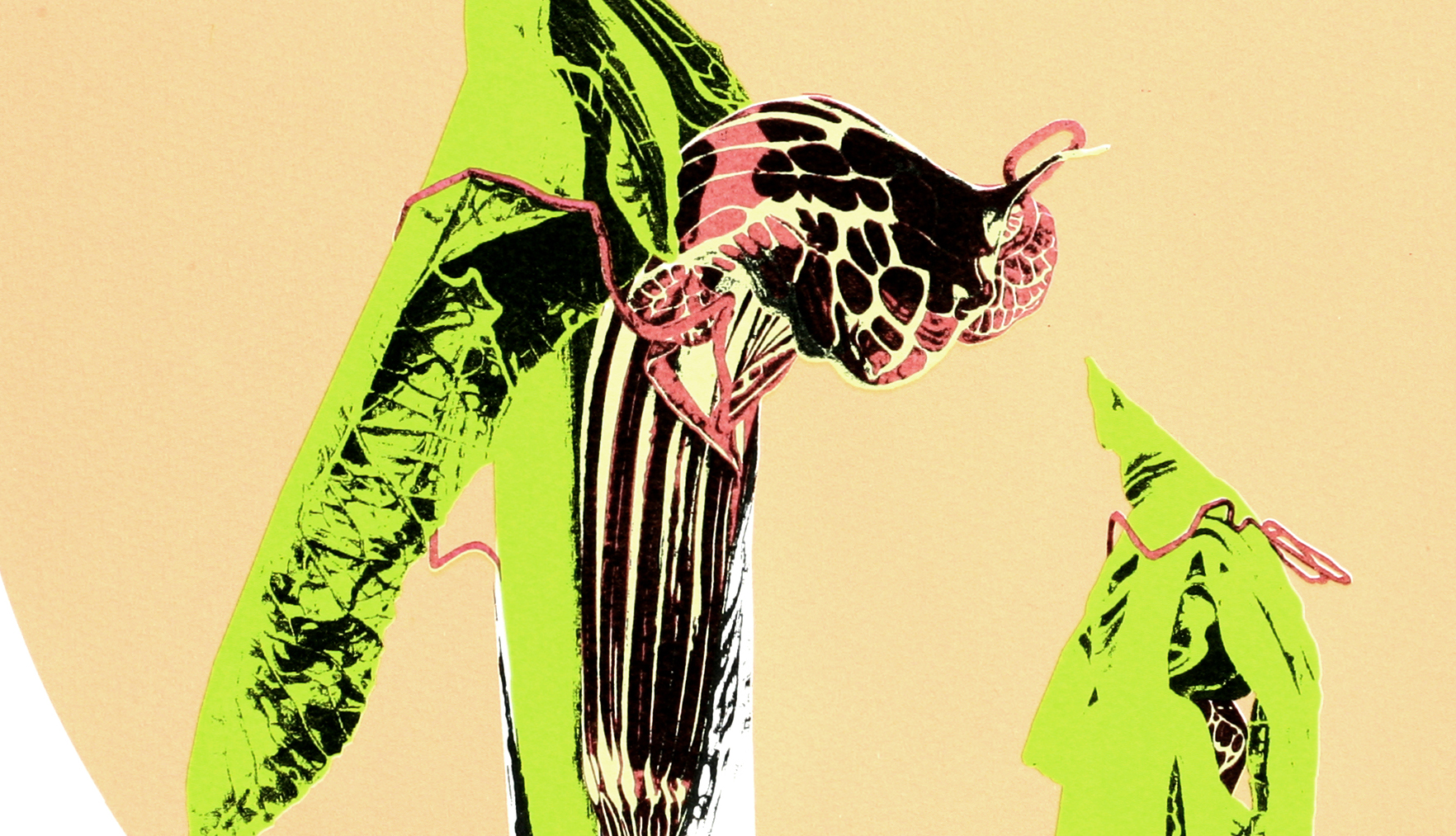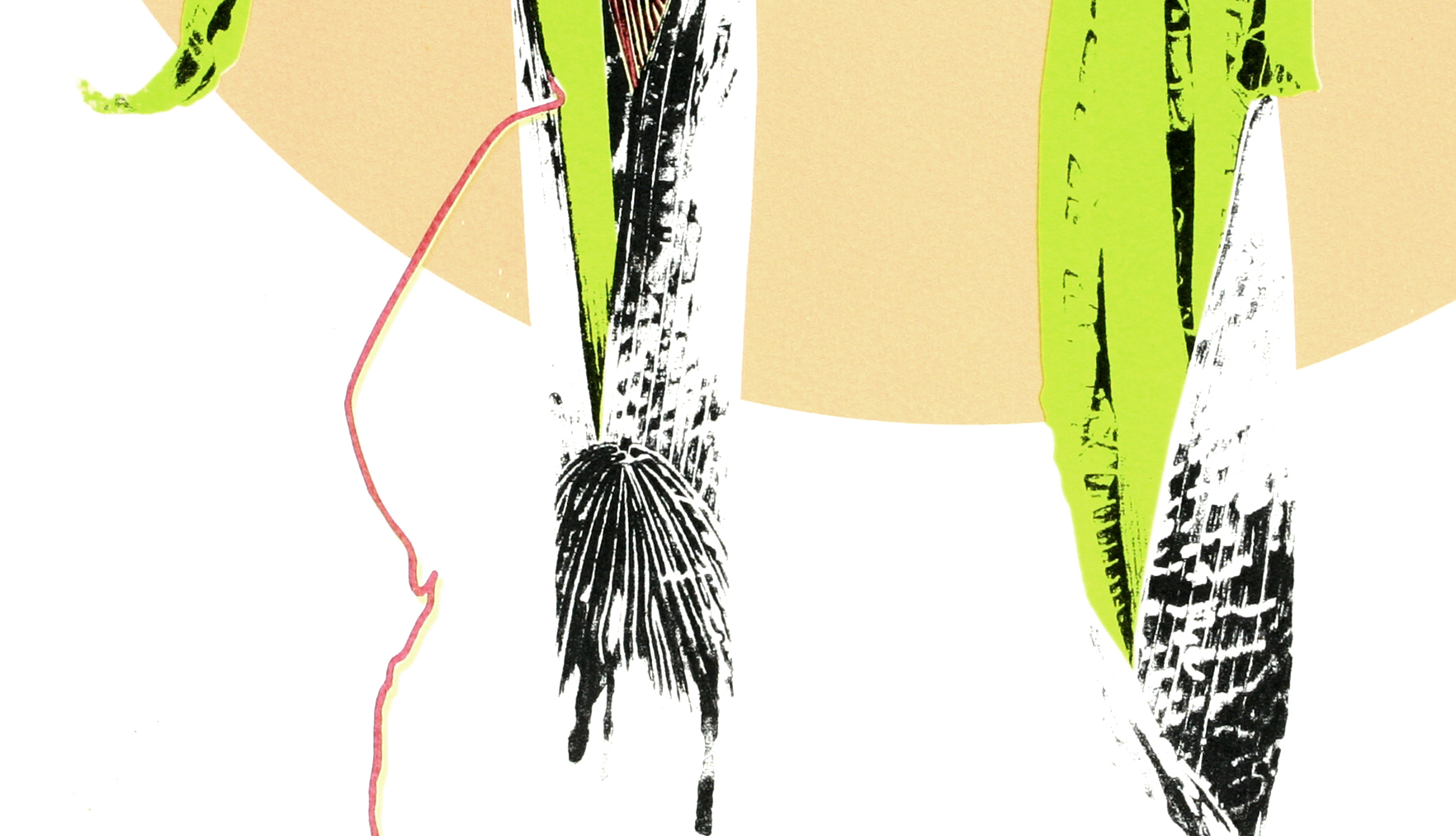Arisaema griffithii with geometric styling
Screen print on Somerset cartridge, no.1of 9 float mounted on charcoal board, framed in dark grey/black
70cm x 50cm, framed to 77cm x 57cm
Limited edition run of 9, 8 available unframed – £695, 1 is framed – £945
Available from the shop unframed >>
An original screen print of Arisaema griffithii.
This is a five colour screen print. I love the black shadow layered over the red/brown of the inflorescence and a lighter layer of green, the contrast really shows off the chequered pattern. The red also highlights the spadix wiggling down towards the ground, while the crinkled unfolding leaflets look so fresh.
*the outer sheaves that protect the growing shoots
Botanical details
Common name: Griffith’s Cobra Lily, discovered by W. Griffith, a British colonial physician with the East India Company in Bhutan. W. Griffith subsequently became the superintendent of the Calcutta Botanic Gardens.
A. griffithii is regarded as one of the most spectacular arisaema and is very popularly cultivated. It is widely distributed and as such has a great diversity across its features. In particular there is a large variability in the width across the spathe limb lobes and in colour ranging from mid brown and green to dark chocolate purple and green. There can also be significant variance in the patina and colour of the peduncle, petiole and leaf. Of all the arisaema its flattened spathe limb is most evocative of a hooded cobra, hence the common name cobra lily.
Deciduous to 60cm tall, 80 cm wide, found in Bhutan, China in the Xizang region, NE India to Sikkim and NW Bengal and also in Nepal. A. griffithii grows in rhododendron forests, but is also adapted to barley sheltered direct sun in open scrub and alpine meadows, 2400 – 3900m.
Flowering period April to May, ripening in June and July.
“The Genus Arisaema, A Monograph for Botanist and Nature Lovers“, Guy and Liliane Gusman, 2006, A.R.G. Gantner Verlag K.G. “Himalayan Cobra-lilies (Arisaema) Their Botany and Culture”, Udai C. Pradhan, 1990, Primulaceae Books, Himalayan Plant Journal, Kalimpong-734301, Darjeeling, Gorka Hill Council, West Bengal, India.
© Marianne Hazlewood




